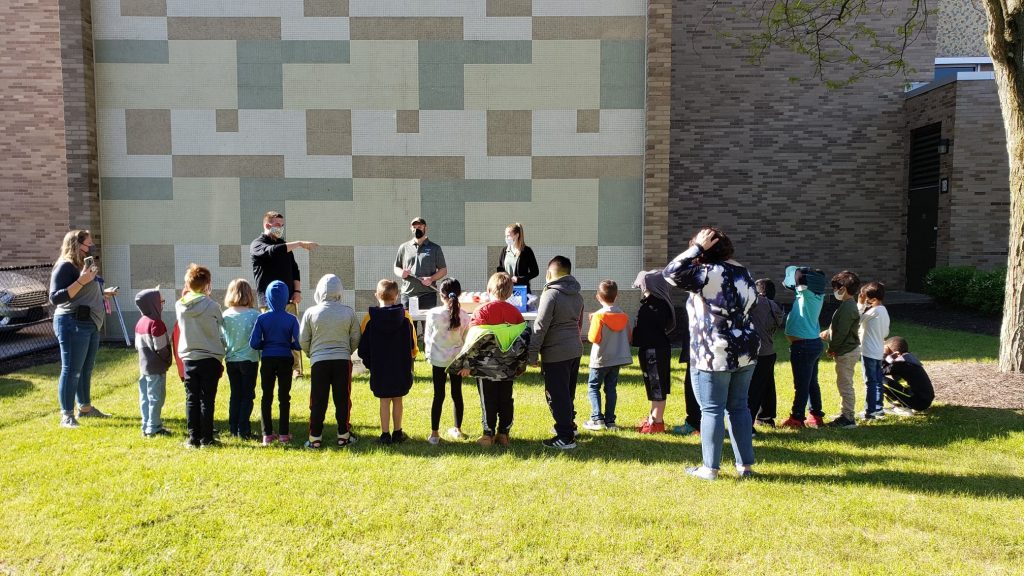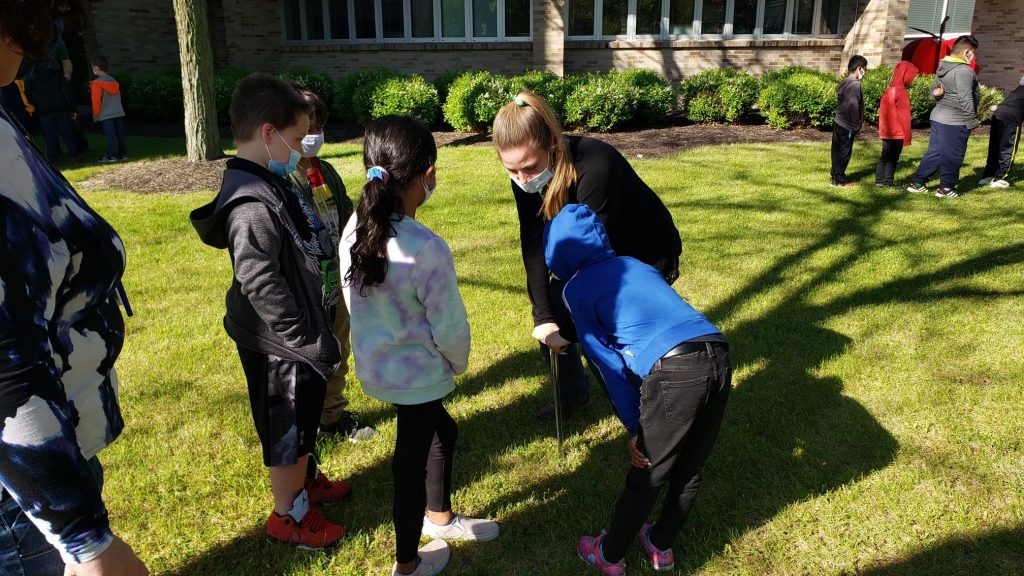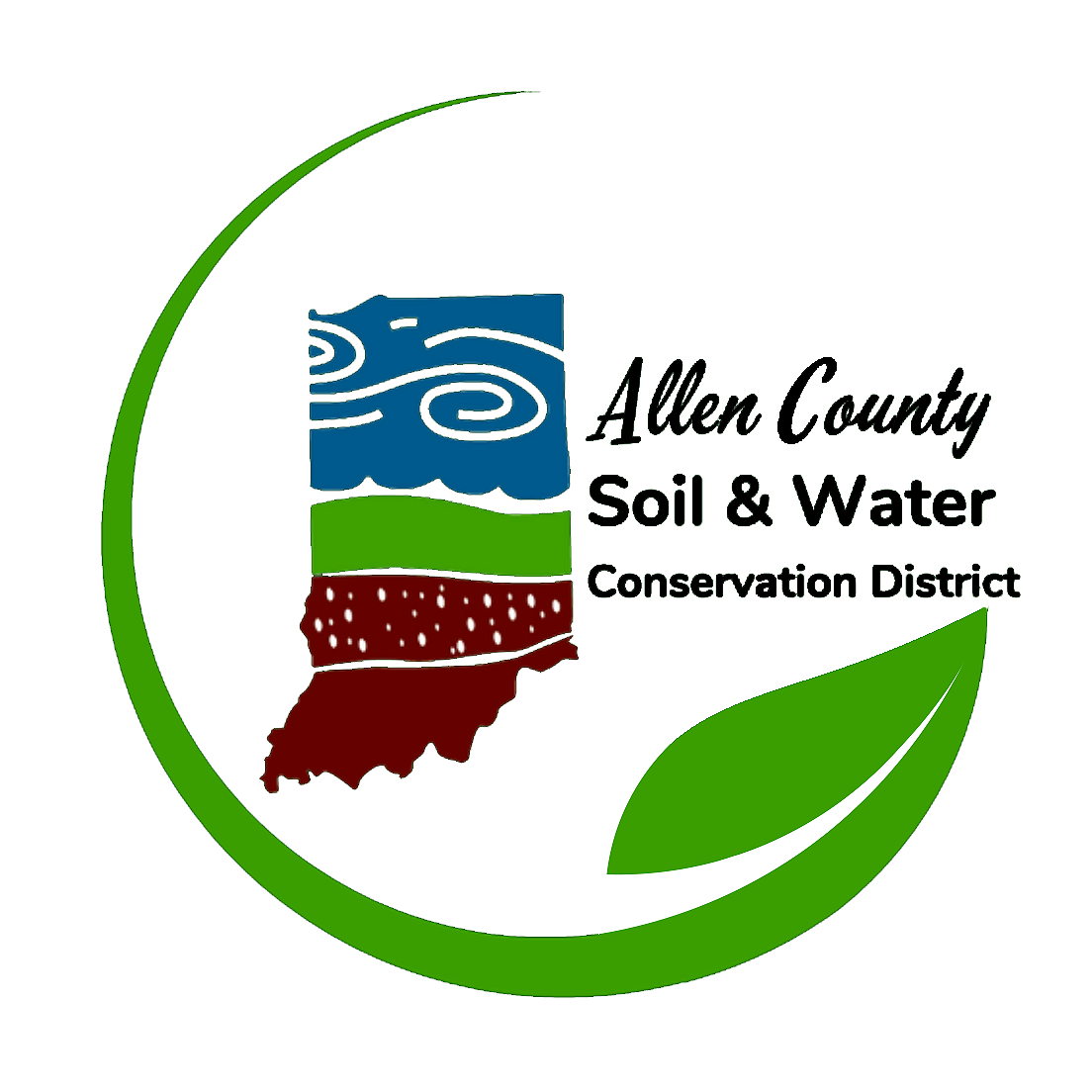Soil testing is a valuable way for farmers, gardeners, and those with lawns to know what nutrients are already available in their soil, as well as what nutrients should be added. Not knowing what is already available in your soil, makes it easy to over-apply or under-apply fertilizers. Over application can cause negative impacts on water quality if runoff transfers the excess nutrients to waterways. Having too few nutrients in your soil can impede plant growth.
No matter what you’re growing, getting a soil test is important!
On Friday, May 14th, the Allen County SWCD and Purdue Extension partnered to teach soil testing to the first grade students at Washington Elementary School in downtown Fort Wayne. The students did an excellent job listening!

The class learned the importance of getting a soil test. Their faces lit up as they answered questions about how we can protect our water systems by keeping excess nutrients out of them. Excitement filled the school grounds as teachers, students, and agency staff chose different locations to collect soil samples. Each student was able to pick a sampling location.

The first graders not only learned about soil testing, but they also learned about the different textures of soil. Students felt examples of sand, silt, and clay, as well as play a game that taught them the different properties of these textures. Sand is the largest particle with lots of surface area. It feels course when rubbed between your fingers. It allows for good drainage and doesn’t hold water or nutrients very well. Silt is the medium-sized particle. It feels smooth like baking flour when wet. It doesn’t stick together, so it still has good drainage, but it is small enough to hold water and nutrients. Clay is the smallest soil texture. It sticks together when wet, giving it a sticky texture. Much of the soil in Northeast Indiana has a heavy clay content. Clay does not drain water easily, sometimes remaining waterlogged and causing root rot in plants. On the other hand, clay soils are excellent at holding nutrients.
If you knew all this, congrats! You are smarter than a first grader, but don’t stop there! Keep learning about Conservation Practices like soil testing.
This demonstration was sponsored by the Natural Resources Conservation Service (NRCS) through our Urban and Small Farms Program. The USDA is an equal opportunity provider and employer.
